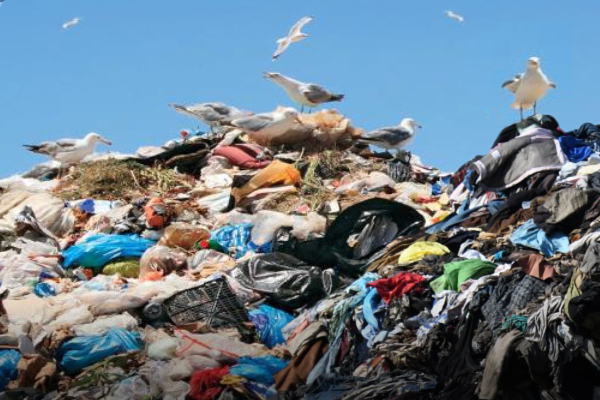
It’s been reported that more than 60% of modern fabric fibers are synthetics, derived in part or entirely from fossil fuels. When those fibers end up as discarded apparel in a landfill, they will never decay. Nor will the microfibers that end up in our Earth’s waters. Disposable fashion is wasteful by design. Today’s consumer buys 60% more clothing items than they did just 15 years ago, yet keeps them for half as long. According to the Council for Textile Recycling, the average US citizen throws away 70 pounds of clothing and other textiles annually. The U.S. EPA estimates that textile waste occupies nearly 5% of all landfill space!
The clothing and footwear industries are also responsible for around 10% of the global greenhouse gases emitted in the entire world—with the textile industry alone releasing more than 1.2 billion tons of CO2e into our atmosphere every year. The manufacturing, transportation, and use and disposal of garments has a significant impact on the planet, which is only increasing as our consumption patterns continue to grow.
Patagonia is part of this industry, and their entire business is implicated in its impacts. They rely on water, chemicals and fossil fuels across their supply chain—growing cotton, recycling polyester and nylon into thread, weaving and dyeing fabrics, and transporting their products to customers.
Over the years, Patagonia has committed to numerous initiatives aimed at reducing their environmental impact across their business, such as only using organically grown cotton and increasing their use of recycled materials. Patagonia was founded with a purpose to build the best products that cause the least amount of harm. That ethos guides them to take a comprehensive look at all the impacts their business creates. However, priorities are important, so they’re focusing on three environmental goals as we all move toward 2025:
– By 2025, they’ll be 100% carbon-neutral across our entire supply chain. they’ll do this by reducing their footprint and investing in impactful renewable projects and natural climate solutions.
– By 2025, all Patagonia apparel products will be made from 100% recycled, reclaimed or renewable resources.
– By 2025, Patagonia’s packaging will be 100% reusable, home compostable, renewable, or easily recyclable.
For more information regarding this socially and environmentally responsible company visit patagonia.com.